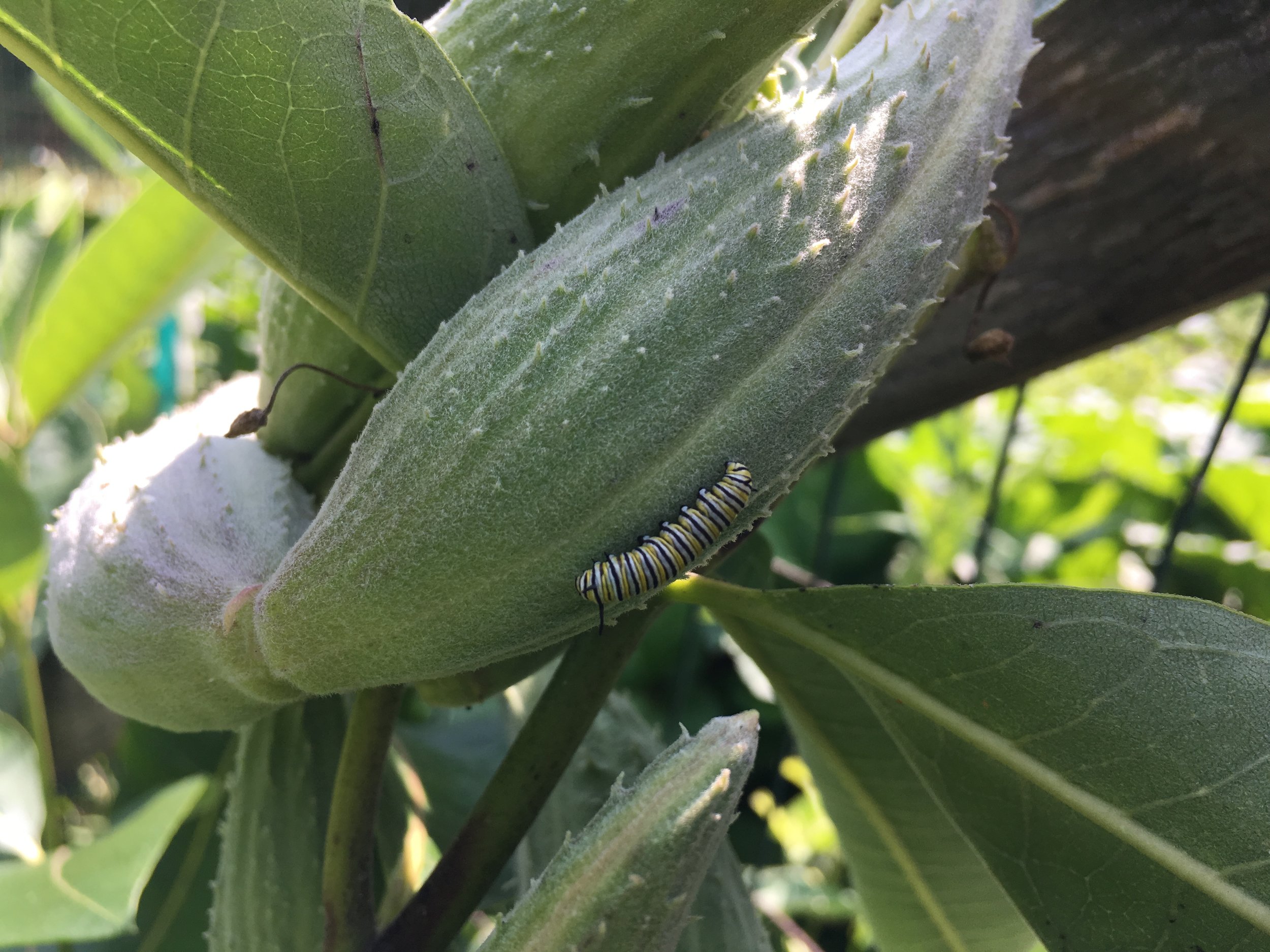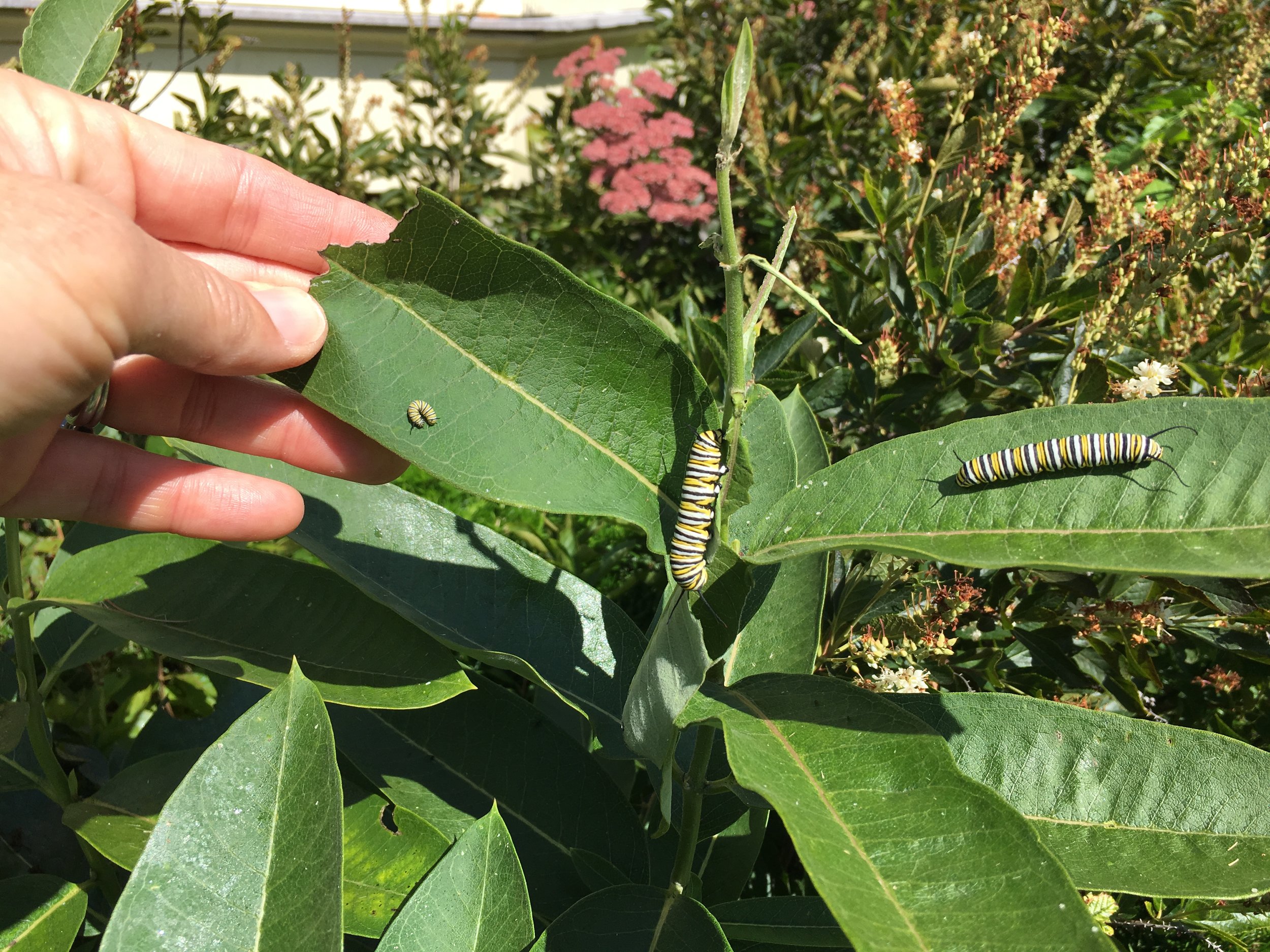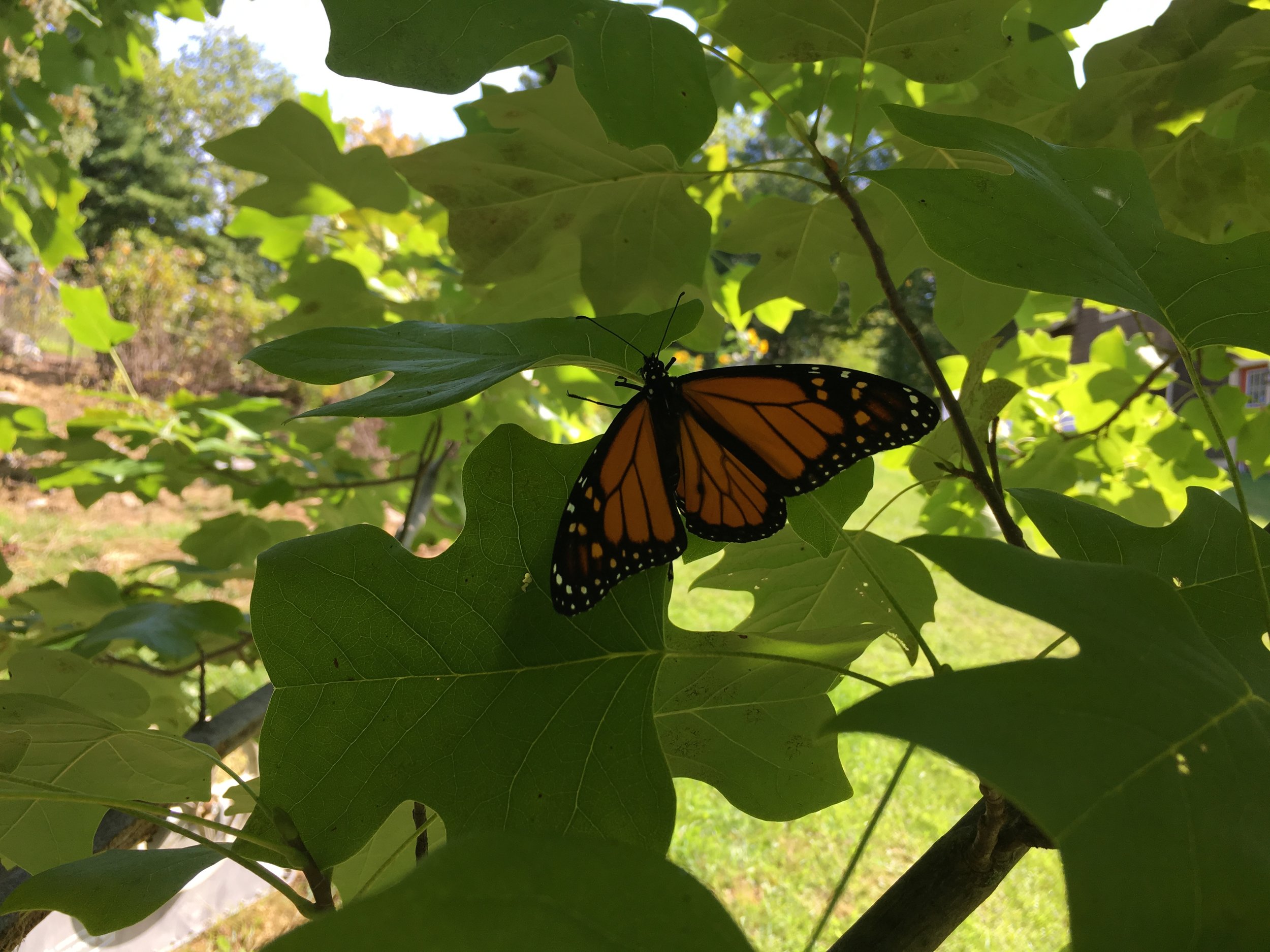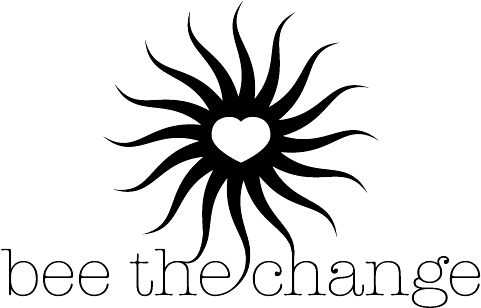pollinator of the month: the monarch butterfly
Image Source: http://blog.hmns.org/2014/04/spring-2014-butterfly-plant-sale/
danaus plexippus: the monarch butterfly
Preferred Habitat: Monarch butterflies flourish in open meadows and grasslands with a variety of nectar-bearing plants.
Favorite Nectar Plants: Monarchs consume nectar from a variety of flowers, using their long "tongues." These butterflies are especially attracted to brightly colored flowers with flat surfaces that they can easily land on, such as sunflowers (shown at right). While feeding, they pollinate an array of wildflowers.
Favorite Host Plants: Monarch butterflies also have a dependent relationship with milkweed, a poisonous plant which grows throughout the eastern U.S.. Female monarchs lay their eggs on milkweed plants, and the young caterpillars feed off the poisonous leaves after they hatch. The milkweed toxins that monarch caterpillars ingest in this period remain in their body for the rest of their lives, and the distinct coloring of the monarch butterfly announces the presence of these toxins to would-be predators. To support these beautiful pollinators, we plant milkweed in some of our solar fields (shown at right)!
Long Distance Travelers: Because they cannot survive freezing temperatures, monarchs make extraordinary migrations ever year to winter in Mexico or Southern California. Some monarchs travel up to 3,000 miles to reach their home for the winter!



To Learn More: Sources
https://www.nwf.org/Educational-Resources/Wildlife-Guide/Invertebrates/Monarch-Butterfly
https://www.nps.gov/articles/monarch-butterfly.htm



